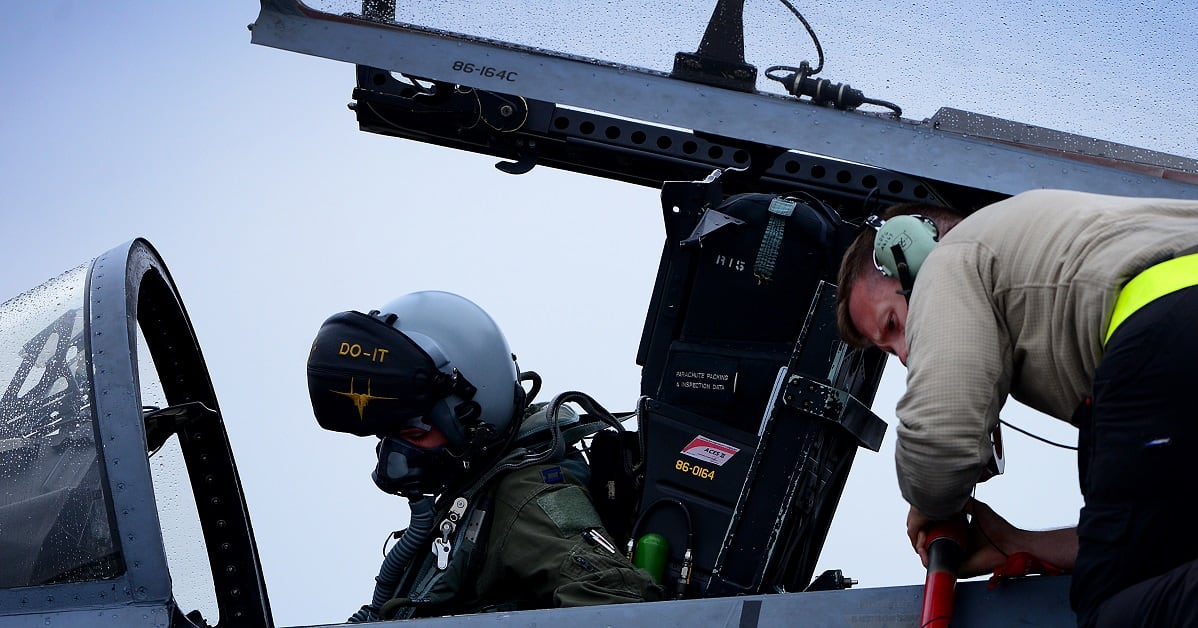The Air Force is making its case for the biggest expansion since the end of the Cold War — swelling its number of operational squadrons by 24 percent, from 312 to 386 by the end of 2030.
But getting there will be tricky — not only financially, but also logistically. And in a roundtable with reporters at the Air Force Association’s Air, Space, Cyber Conference in National Harbor, Maryland, on Tuesday, top Air Force leaders said the details on how the service can reach that goal are still being hammered out.
While the Air Force created its “Air Force We Need” proposal to illustrate what is necessary to carry out its part of the Pentagon’s National Defense Strategy without considering budgetary restrictions, the price tag remains the elephant in the room.
Air Force Secretary Heather Wilson said the Air Force has always looked at its needs year-by-year as part of the annual budgetary process. But, she said, a longer-term, strategic look was needed.
“We never said, here is what we think we need to execute the National Defense Strategy,” Wilson said. “We should know the answer to that question. We all recognize, we’re not naive, about the financial constraints within which you make decisions. We make those all the time. But we also should know what is required from the perspective of those who plan and develop military forces to execute that strategy. That’s where the 386 squadrons come from.”
Wilson said the service has conducted extensive work over the past six months, including conducting 2,000 models and simulations, to come to the conclusion that the Air Force needs 386 operational squadrons.

When asked what kind of planes, and how many, would be required to carry out the Air Force’s proposal, Wilson said the service is working on five or six more studies it owes Congress by March, that will help spell that out.
“We’re engaged in a conversation here, and we don’t have all the answers yet,” Wilson said. “We haven’t laid out a complete program plan for how we would get to that, or what these particular air frames would be.”
Wilson said the Air Force will share its modeling and analysis on what air frames it needs publicly, and with lawmakers, over the next few months.
RELATED

Air Force Chief of Staff Gen. Dave Goldfein said the analysis was done by looking at squadrons — not platforms — and the tasks the Air Force needs to accomplish, such as defending the homeland, providing a nuclear deterrent, and defeating a peer threat while deterring a near-peer threat while still pressing the fight against violent extremists.
“This is the beginning of a dialogue that’s well ahead of the delivery date of March,” Goldfein said. “A lot of these details are going to be really fleshed out.”
Another question remains: How will the Air Force find enough pilots to fill the added cockpits that could come with 74 new squadrons — especially given its current pilot dilemma?
The service is already struggling to reverse an alarming pilot shortfall of about 2,000 pilots — or 10 percent of the roughly 20,000 pilots the entire force needs — that Wilson has warned could break the force if it continues.
Retention is a big part of the problem, with many experienced pilots leaving the Air Force for lucrative jobs flying for commercial airlines, which have been hiring more than 4,500 new pilots per year. But the flip side of the coin is the Air Force’s training pipeline. While the Air Force isn’t having a problem finding people who want to become pilots, the service is pushing to max out its pilot production at about 1,400 per year. But last year, the former head of Air Education and Training Command said that to keep up with the loss of pilots each year, the Air Force would have to produce even more new pilots — something on the order of 1,600 annually.

And since the Air Force hasn’t yet settled on the mix of aircraft that would be needed for such an expansion, it also cannot yet say how many new pilots it would need.
But a 24 percent squadron increase could require hundreds, if not thousands, of new pilots. Air Force officials have said that overall, expanding to 386 squadrons would likely require a total of 40,000 more active, Guard and Reserve airmen as well as new civilians.
“The follow-up work, that’s part of the dialogue, will be the costing out the number of tails, the number of pilots, the number of maintainers,” Goldfein said. “That’s work that is still to be done. But we made a conscious decision to roll this out now to begin that dialogue going forward, so it can be an inclusive dialogue, as opposed to waiting until March, and rolling it out with all of that complete.”
Stephen Losey is the air warfare reporter for Defense News. He previously covered leadership and personnel issues at Air Force Times, and the Pentagon, special operations and air warfare at Military.com. He has traveled to the Middle East to cover U.S. Air Force operations.





